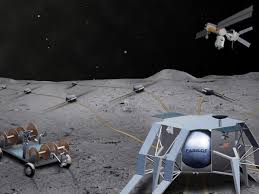
Breaking News
 Elon Tells Rogan the Real Reason Democrats are Prolonging the Government Shutdown [WATCH]
Elon Tells Rogan the Real Reason Democrats are Prolonging the Government Shutdown [WATCH]
 Newsom: Trump Is Trying to Rig the Election -- He Knows GOP Will Lose
Newsom: Trump Is Trying to Rig the Election -- He Knows GOP Will Lose
 There is zero justification for the Department of Justice's silence while the most serious...
There is zero justification for the Department of Justice's silence while the most serious...
 Gabbard Says Trump Has Ended America's Era Of 'Regime Change'
Gabbard Says Trump Has Ended America's Era Of 'Regime Change'
Top Tech News
 The 6 Best LLM Tools To Run Models Locally
The 6 Best LLM Tools To Run Models Locally
 Testing My First Sodium-Ion Solar Battery
Testing My First Sodium-Ion Solar Battery
 A man once paralyzed from the waist down now stands on his own, not with machines or wires,...
A man once paralyzed from the waist down now stands on his own, not with machines or wires,...
 Review: Thumb-sized thermal camera turns your phone into a smart tool
Review: Thumb-sized thermal camera turns your phone into a smart tool
 Army To Bring Nuclear Microreactors To Its Bases By 2028
Army To Bring Nuclear Microreactors To Its Bases By 2028
 Nissan Says It's On Track For Solid-State Batteries That Double EV Range By 2028
Nissan Says It's On Track For Solid-State Batteries That Double EV Range By 2028
 Carbon based computers that run on iron
Carbon based computers that run on iron
 Russia flies strategic cruise missile propelled by a nuclear engine
Russia flies strategic cruise missile propelled by a nuclear engine
 100% Free AC & Heat from SOLAR! Airspool Mini Split AC from Santan Solar | Unboxing & Install
100% Free AC & Heat from SOLAR! Airspool Mini Split AC from Santan Solar | Unboxing & Install
 Engineers Discovered the Spectacular Secret to Making 17x Stronger Cement
Engineers Discovered the Spectacular Secret to Making 17x Stronger Cement
NASA funds concept for gigantic radio telescope on far side of Moon

The telescope has been funded under the NASA Innovative Advanced Concepts (NIAC) program, which fosters the development of some of the wildest and, as the name suggests, innovative projects that could one day revolutionize science and exploration missions.
Space agencies around the globe are trying to find the most imaginative and practical ways to make use of the resources already present on solar system bodies – such as the Moon and Mars – in order to make ambitious projects a reality. This is because in-situ resource utilization doesn't require massive amounts of materials to be transported from Earth into space at an average cost of US$10,000 for a 0.45-kg (1-lb) payload.
It is, therefore, hardly surprising that the idea of using the Moon's own geography to construct a vast radio telescope garnered NIAC investment.
Under the current proposal, a telescope lander, which would presumably host the main science payload, would descend to the center of a 3-5 km (1.8-3.1 mile) diameter crater located on the far side of the Moon. A separate lander, containing the rovers designed to construct the telescope, would land beyond the rim of the crater.



